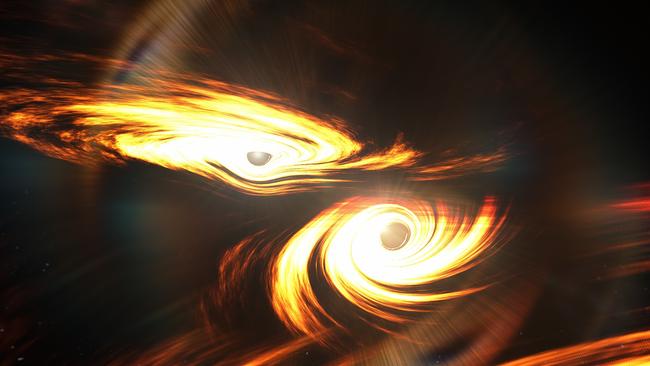University of Adelaide shares in discovery of black hole collision and merger using gravitational waves
Researchers in SA are basking in the “thrill of discovery” after joining a global effort to witness a massive intergalactic collision which could help us understand how galaxies are born.
Tertiary
Don't miss out on the headlines from Tertiary. Followed categories will be added to My News.
- Adelaide’s leading role in discovery of neutron star’s dark demise
- How to get the most out of your Advertiser subscription
Adelaide scientists are part of the international research team celebrating the discovery of the most massive black hole collision and merger detected to date.
As University of Adelaide physics Professor David Ottaway explains, super massive black holes exist at the centre of most galaxies, such as our own.
And smaller black holes, formed when a massive star runs out of fuel and collapses in on itself, can merge with others to create bigger black holes.
But this is something in between, that hints at the connection between the two.
This is the first detection, using gravitational waves, of the collision and merger of two huge black holes, including one “impossible” black hole with a “forbidden” mass in the range not thought to exist. (Stars 65 to 130 times the mass of our sun are believed to disintegrate, without leaving a black hole behind, at the end of their lives).

The collision, captured by observatories in the US and Europe in May last year and reported this week, created a monster black hole 142 times the mass of our sun.
As part of the ARC Centre of Excellence for Gravitational Wave Discovery (OzGrav), scientists in Adelaide develop and deploy instruments that help these observatories run.
Professor Ottaway enjoys “the thrill of discovery”.
“Being part of something much bigger than yourself is quite exciting,” he said.
“It’s just the challenge of doing something amazingly hard that can lead to some amazing scientific results, expanding human knowledge and, also, looking for ways we can transition the technology developed into other areas.”
Some of that technology is going into mapping for wind farms and developing a way to pinpoint and monitor sources of methane, a potent greenhouse gas, from above.
OzGrav researchers contributed to the detection and used the computing resources of the new Gravitational-Wave Data Centre to infer the masses of the merging black holes.
The universe was about 7 billion years old when these two black holes collided and the gravitational waves rippled out towards us.

